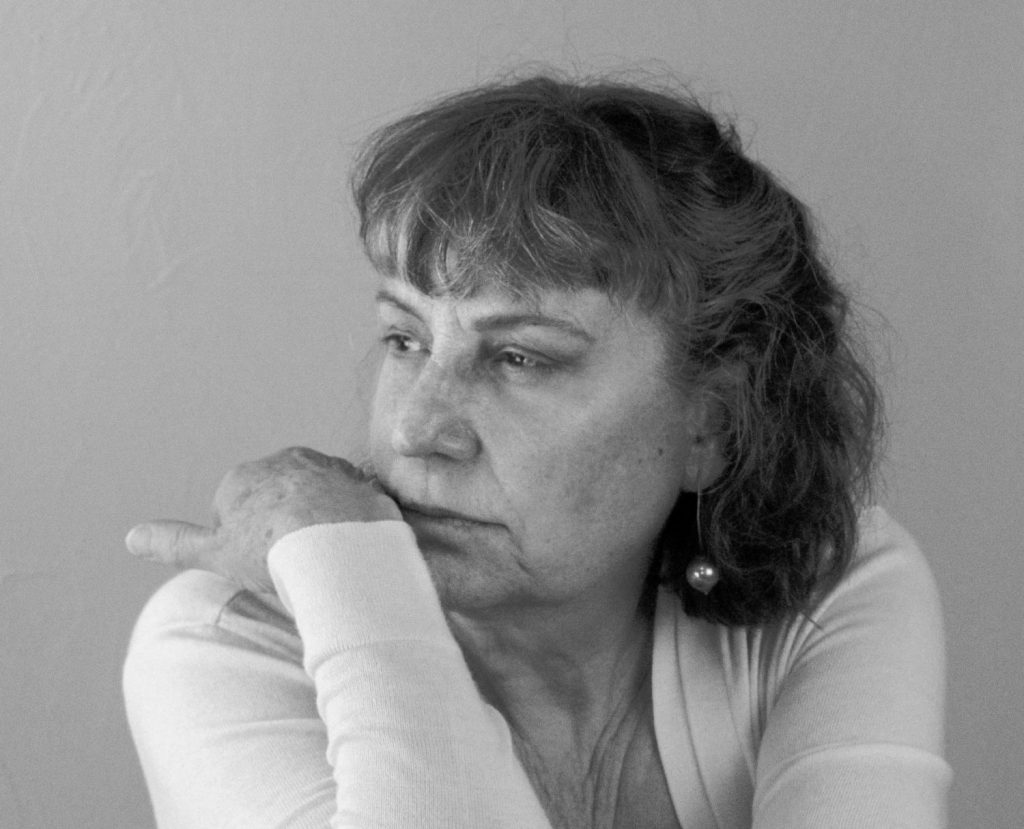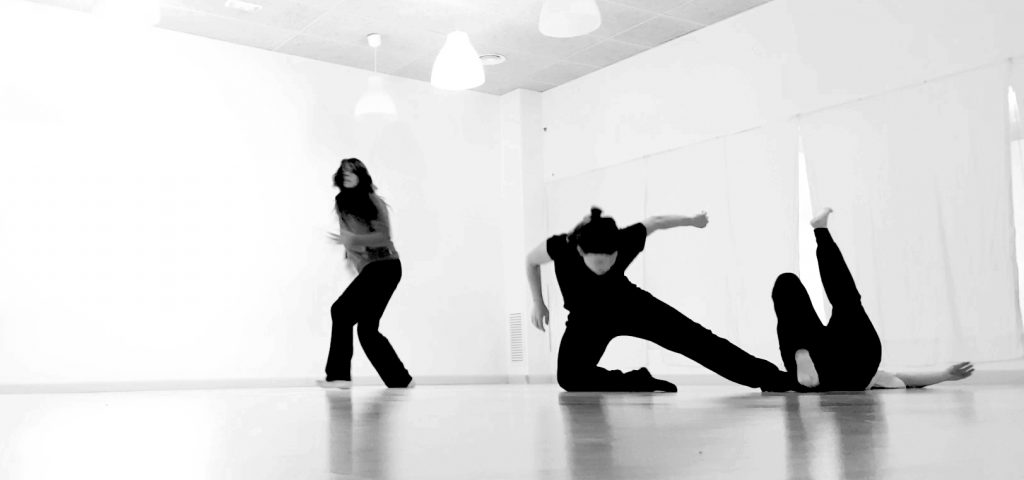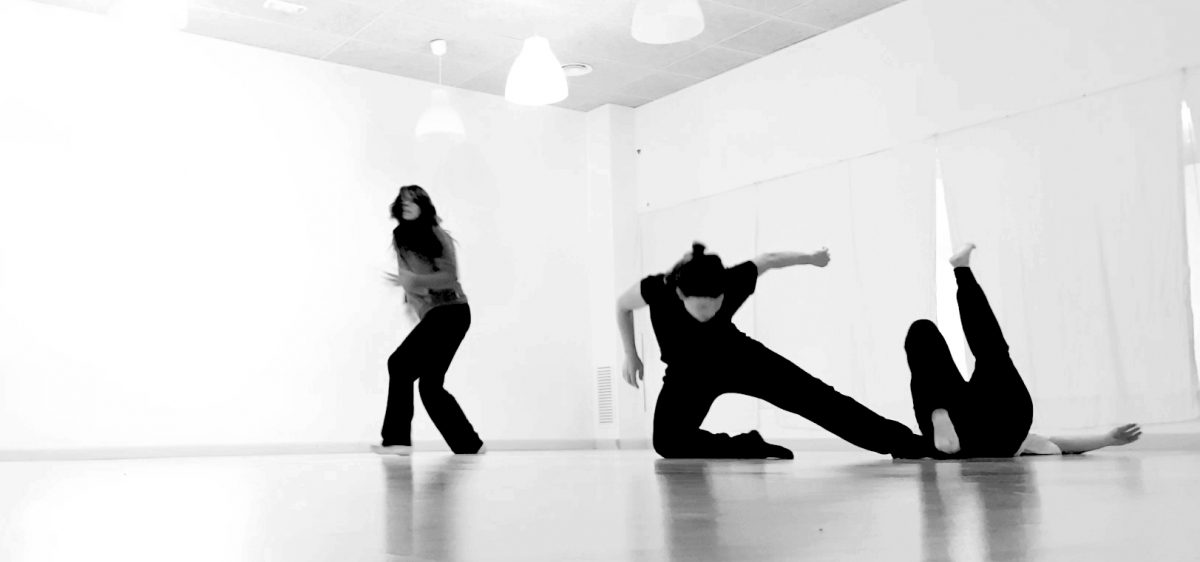by Hazel Anna Rogers for the Carl Kruse Arts Blog
I arrive in the room. Other students are milling around, some stretching in the blinding winter light stretching in from the tall windows on the far side of the room, others laughing in little clusters, some silently penning down notes in blank-paged cahiers.
We are still new to one another. We do not yet know each other’s gaits or humor. Regardless – the mood is high and we greet one another jovially and warmly, like old friends.
A woman arrives a few minutes after myself. Her face is obscured by a thin blue surgical mask, and she has a mustard yellow bobble hat on. All I can see are her eyes. She takes off her coat and places it tenderly over the back of a chair, then beckons us all over to her. She has a gentle Spanish accent, and her tone itself is soft. The students and I come to sit in a semi-circle around her, and the woman begins speaking. We listen, and smile beneath our masks, but we do not yet know what is to come.
The woman, whom we discover is Isabel Sanchez, introduces the term Viewpoints into the room. We toy with the word, placing our own pre-learned attributes and meanings to it, then let it drop as Isabel continues to speak. At one point, Isabel suddenly points at a line on the floor before her. The line is one of wear and tear, likely created by the sliding foot of a dancer or actor. Isabel lies down and begins caressing the line, speaking of its beauty and wonder, of how fascinating and unseen this line previously was, of how she could not believe she had never noticed such a line before. We laugh at this spectacle, at once befuddled and intrigued by Isabel’s attentive and overt curiosity.
Isabel brings herself back to sitting, then gasps and points at Giulio, one of the other students. She remarks on the extraordinary form that has been produced by the creases on his jumper, and by the complexity and magnificence of the shape that his body has produced by sitting as he is, with his legs outstretched in front of him. Isabel jumps up and goes over to Giulio, then asks him how he managed to create such a beautiful thing so effortlessly, and inquires as to whether he was indeed trained at Harvard, so astonishing was his shape. We laugh at Isabel, and at Giulio’s shy charm.
This was our introduction to Viewpoints, a postmodern theory that we engaged with for four weeks. That is to say, we trained with Isabel in Viewpoints for four weeks, but, at least for myself, this training lives on, for it is itself infinite.
Mary Overlie, the founder of the Six Viewpoints (often known simply as ‘Viewpoints’), was a deconstructing postmodern theater practitioner who lived from January 15th 1946 until June 5th 2020. She was the woman who taught our teacher Isabel Sanchez. Mary was not known in the sense of fame or celebrity; she was unafraid of obscurity in her work. She preferred to let her work shine above herself, as this enabled her greater creativity in her practice. I marvel at this humility, especially considering the conflict that Mary encountered when Anne Bogart initially took the title ‘Viewpoints’ and attributed it to her own work. Isabel told us, during those too-short four weeks, that this was the one thing that really upset Mary during their time working together. It was a relief when Anne finally released the name Viewpoints from her work and acknowledged Mary’s precedent in the Viewpoints practice.

Mary Overlie
“Observe the ingredients, the materials of performance, contemplate the particles.
Once you find them, train yourself to listen, allow them to become your teachers,
embrace them as profound partners. Allow them to create.”
For many years, Mary attempted to simplify and fully encompass Viewpoints as a complete practice, a practice that could hold and feed actor, audience, and the materials simultaneously. In 1998, a national Viewpoints conference was held in New York, where Mary succeeded in articulating a basic and highly functional postmodern art training. Her Viewpoints, though they can indeed be employed as a methodology in dance, are predominantly centred around theatre.
Mary was born in Terry, Montana. She spent much of her youth with her neighbors: Robert and Gennie Deweese, who were notable modernist painters in the Montana contemporary arts community. Mary would fall asleep listening to conversations about innovations in the art world, and, somehow, these words landed so deeply within Mary that they inspired a profound interest in the materials of performance and art that would eventually lead to her working in such establishments as The Whitney Museum, Mabou Mines Theater Company, and The Experimental Theater Wing of the Tisch School of the Arts. Instrumental in Mary’s ultimate creation of the Six Viewpoints was Yvonne Rainer, an American experimental artist especially prominent in the field of dance. Yvonne herself was inspired by the procedures of chance illustrated in the work of John Cage and Merce Cunningham (whom she trained with for eight years in the 1960s). Yvonne’s work was, in simple terms (as I have not the space with which to articulate the sheer breadth and honesty of her work in this article), a blend of quotidian pedestrian movement, such as walking and standing, with aspects of classical dance. Mary was besotted by Yvonne and followed her work until the end of her life. To more concisely describe the nature of Yvonne’s work, one might look to her ‘No Manifesto’:
NO to spectacle.
No to virtuosity.
No to transformations and magic and make-believe.
No to the glamour and transcendency of the star image.
No to the heroic.
No to the anti-heroic.
No to trash imagery.
No to involvement of performer or spectator.
No to style.
No to camp.
No to seduction of spectator by the wiles of the performer.
No to eccentricity.
No to moving or being moved.
As you will see, these rejections of the expected nature of performance have some similarities with the doctrine of the Viewpoints (though I hesitate to use such a dogmatic term to describe the Viewpoints approach).
According to The Six Viewpoints website, Viewpoints is:
‘a study that establishes and expands the base of performance by inquiring into the vocabulary of the basic materials that are found in the creation of all art. The Viewpoints theory involves three intertwined sections:
The SSTEMS, an interrogation of the materials; Space, Shape, Time, Emotion, Movement, and Story.
The Bridge, a set of nine philosophical interrogations into the nature of performance.
The Practice Manual, a set of practical exercises that lead the artist into a dialogue with their work process.’
Using these approaches, the artist can exponentially expand their creative processes from a deeply horizontal standpoint which rejects the hierarchical structure of Classical and Modernist art forms. Most notably, Viewpoints work aims to destruct the ‘creator/originator’ of preceding methods of art creation in favor of the ‘observer/participant’ which the artist is ultimately aiming for in their practice of Viewpoints. The Viewpoints do not wish to erase the history of art, nor to condemn other art forms for their hierarchical nature, but the Viewpoints do wish to shift the perspective of the performer by starting from a point of careful and respectful deconstruction (separating the whole (theatre) into its essential parts/materials) with the eventual objective of reifying these materials with greater clarity. This, the Viewpoints proposes, is truly postmodern.

Students at the Alvaro Prats Bertomeu studio in Spain, practice Viewpoints theory
I think that, at least for myself, the term ‘postmodern’ has been so carelessly abused throughout the 21st Century that it almost lost its meaning. Isabel herself told us of a show she went to see which dubbed itself ‘postmodern’, but which was inherently hierarchical in its artistic proposal; there were bright lights and booming music coupled with an obvious ‘protagonist’ situated center stage for the majority of the performance. Even I have been known to throw around the term ‘postmodern’ when referring to the evolution of advertising, or in relation to various cultural phenomenon that I have been exposed to, such as the platform of TikTok and its enabling of fast fashion. These things are not postmodern, I now realize. Postmodernism is a wholly specific term which refers to a disparate method of artistic practice which is a great departure from anything we have yet seen in the world of art. It is inclusive, non-hierarchical (with regard to those that practice it, those who observe it, and the materials which feed it), and fundamentally anarchical. This does not mean that the work is within discipline and strict guidelines; freedom does not mean that one can do what one wants without thinking. The Six Viewpoints website suggests that:
‘this work does not have a pre-existing idea of what theater is, how it should be created, what it should say or how it should say it. In entering this work the artist finds that they take possession of the stage and are anchored in its realities free of the opinions of others about how to make theater.
[…]
The simplicity of The Six Viewpoints is based on one on one contact with the basic materials. This approach aligns itself with the eastern practices that rely on the student to find their own truth as part of the understanding encompassing all of life. In this work there is no teacher, no authority to pronounce achievement or failure beyond understanding that any part is a part of the whole.’
It was oftentimes difficult to engage with this practice during my time with Isabel. Some days, I would come into class and find myself unable to focus fully on the SSTEMS and what they were saying to me. It is difficult to let go of oneself, of one’s ego, of ones ‘creator/originator’ when these are the sole elements of theatre that one is initially ordered to create with. The SSTEMS, to clarify, are the materials that the Viewpoints artist has a dialogue with in their practice. These are: Space, Shape, Time, Emotion, Movement, and Story (or Logic). There are many separate aspects of these SSTEMS, for example Space can be deconstructed into Architecture, Direction, Location, Trajectory. This is a minimalist, conceptual art, wherein all performers are particles making up the whole. These particles are interdependent and co-dependent, but not independent. These is no ego in the postmodern practice of Viewpoints. This is perhaps due to the influence of Transcendental Meditation and Buddhism on Mary throughout her life. In the practice, the performer does not have the aim of CREATING a product. The performer may be writing a dance in space, but their work is improvisational in nature and rejects the self in order to achieve the truth of the essential nature of things. The practice is one of experiencing and perceiving which ultimately leads to a higher level of consciousness. In Viewpoints, the act of waiting can CREATE art. The performer does NOT create art, it lands on them and they experience it.
It is difficult to write about Viewpoints, for writing about this practice cannot possibly convey the experience of finally noticing the material of Time when standing in a room facing another particle on the other side of that room. How can I articulate the true nature of Time with words? How can I communicate the feeling of the material Space TELLING me where and how to move? How can I express the gentleness of the materials, how they hold and care for me as a performer, how they lead me to places I never even conceived of? In writing this article, I fear that I am intellectualising Viewpoints beyond recognition, when this is not at all my aim. I fear even that, upon reading my article, Isabel might point out errors in my terminology, in my interpretation of the Viewpoints, in the unsubtlety with which I have written about this beautiful and indescribable practice. I will be forever grateful to Isabel for bringing Viewpoints into my life. It has certainly been a transformative journey, and one which I will continue to pursue for the rest of my days.
================
Find the blog home at https://carlkruse.net
Contact: carl AT carlkruse DOT com
Other articles by Hazel Anna Rogers include: Metropolis and Reflections on Montmarte.
Also check out Hazel’s article focusing on Stanislavski’s take on acting over on this other Carl Kruse Blog.
The blog’s last post was on Yury Kharchenko.
Find Carl Kruse on Goodreads.

I had a difficult time relating to VIEWPOINTS when I studied its approaches to dance some years ago, but respect what it is trying to accomplish.
Thanks for this expose on Six Points.